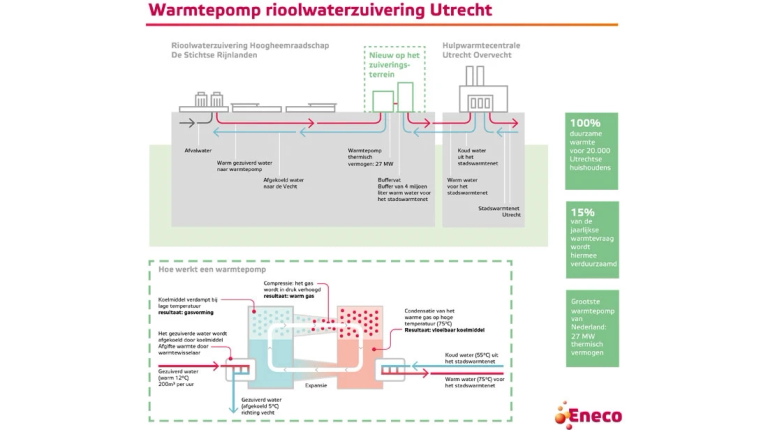How does a heat pump work
At low temperatures, heat pumps absorb heat that is emitted at a high temperatures to the district heating network. To do this, an “extra ingredient” is added, which in this case means electricity. At the sewage treatment plant in Utrecht, heat is extracted from the treated wastewater (also called effluent). The temperature is then raised to a usable level and the heat is conveyed to the district heating network. Two-thirds of the heat is in treated wastewater. We add one-third of sustainable electricity to that so that we can raise the heat to 75 degrees.
There is refrigerant flowing through the heat pump. This refrigerant is used to extract the heat out of the treated water. The refrigerant evaporates at low pressure and the corresponding low temperature. That means that a heat pump can also absorb heat at low temperatures. The refrigerant extracts heat from the treated water and becomes gaseous due to the evaporation. In a closed system, the gas that is present is then circulated and the pressure is again raised. As a result, the hot gas condensates at the high temperature and due to the raised pressure, after which heat is released. This heat is conveyed to the district heating network. After this happens, the pressure in the condenser is lowered again and the refrigerant is transported as a liquid so that the cycle can start again. In this way, this residual heat is used to help make the surroundings more sustainable.